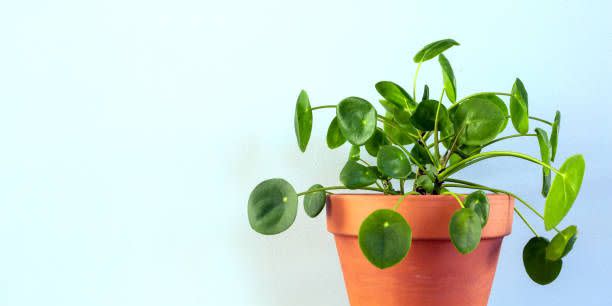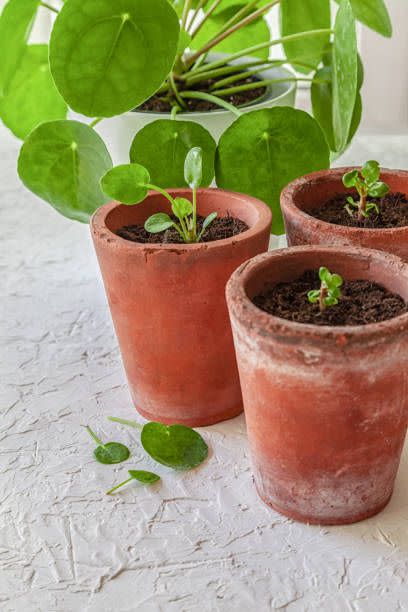Why You Need a Chinese Money Plant in Your Life

With all the extra time at home this year, admit it: You've turned into a plant person! And why not? Surrounding ourselves with nature is good for mind and spirit; more and more studies have shown that plants help reduce anxiety and make us feel happier and healthier. But there's one petite tabletop plant you may not have yet added to your indoor garden. With its round, shiny leaves and sassy style, Pilea peperomioides, also known as Chinese Money plant, Coin plant, or Sharing plant, is the latest Instagram greenery star.
“It’s popular because its unique foliage stands out from other types of houseplants, and it doesn’t need a lot of coddling,” says Justin Hancock, horticulturist with Costa Farms, one of the largest houseplant growers in the world. “It has a mid-century modern feel, too, so it fits well in those type of design settings.” But anyone looking for a fun accent plant will love Pilea, as it's sometimes called for short.
Here’s how to care for this charming plant:
How much light does my Pilea need?
“It wants as much indirect light as you can give it,” says Hancock. Typically, that means a south or east-facing window. But how much light any window receives depends on factors such the time of the year and angle of the sun or whether you have a roof overhang or tree shading the window. If you’re not sure what kind of light you have, try the shadow test: If the plant casts a strong shadow for much of the day, that means it’s receiving bright light. If your light is insufficient, get an inexpensive LED plant light.
How should I care for my Pilea?
“You never want the soil to stay moist,” says David Ruland, greenhouse manager at Atlanta Botanical Garden. “Push a finger into the soil and if it sticks to your finger, you can wait a day or two before watering. Overwatering is one of the most common reasons houseplants die.” Alternatively, after you give it a good drink, lift up the pot to feel its heft; the weight gives you an idea of when it needs watered (or not) the next time.
Should I feed my Pilea?
Plant parents often get nervous about this step, but most houseplants will survive whether or not you feed them, says Hancock. If you do want to give it a little nutrient boost, any general-purpose fertilizer is fine. Read the label, but understand that’s the maximum amount that should be administered. Generally, Hancock recommends using ¼ to ½ strength the recommended amount or fertilizing less frequently, such as once a month or only in the spring. Or, use a time-release fertilizer, which will feed as needed with no help from you.
Should I put it outside?
Pilea will push more growth if you put it outside in summer due to the high light levels, but it’s not really necessary. If you do take it outdoors, keep it out of direct sunlight, which will cause sunburn. Sunburn shows up as bleached spots and will not heal, says Hancock.

Can I propagate it?
In time, your plant will make little "babies" that pop up around its base. You can pot those up and give them away; thus, the nickname Sharing plant! Use a knife or chopstick to lift the tiny plant up to look for roots, says Hancock. If it has developed them, cut it away from the big plant, place it in basic potting soil, water lightly, and you’re good! The babies may be as small as an inch and can take a few years to mature, as this plant has a moderate growth rate. In time, your original plant also may develop a central stem, making it look sort of like a bonsai tree. But it won't get much more than 18 inches tall and wide at most.
How durable is it?
One thing you need to remember is that this plant is somewhat brittle. Leaves snap off easily, so keep it somewhere your cat or kids can’t accidentally damage it. While this family of plants (Urticaceae) is typically deemed as non-toxic to pets, ingesting any plant still may cause an allergic reaction or GI upset. If a curious cat or dog takes a nibble and you’re concerned, call your vet.
You Might Also Like
